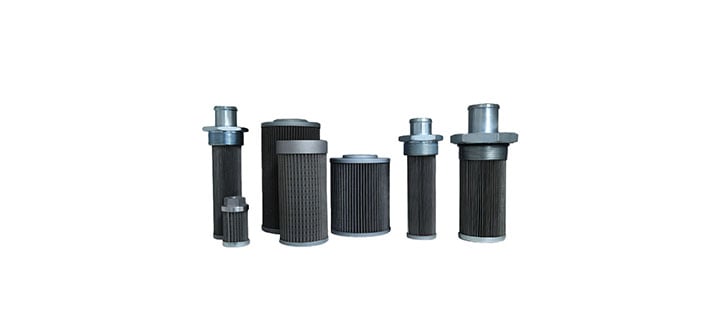Hydraulic oil filter is a device used to filter solid impurities in the hydraulic system, which can keep the hydraulic oil clean and protect the normal work of the hydraulic system. In order to understand the characteristics of hydraulic oil filters in more detail, the following will be introduced around its different aspects:
1. Filtration accuracy of hydraulic oil filter
(1) A variety of precision classification
The hydraulic oil filter can be divided into crude oil filter, ordinary oil filter, fine oil filter and special fine oil filter according to the filtration accuracy. These different accuracy levels can meet the requirements of various hydraulic systems for oil cleanliness.
(2) High-precision filter materials
Filters usually use microporous filter paper, copper mesh, metal powder and other high-precision filter materials, which can capture particles as small as a few microns, so as to effectively ensure the cleanliness and stability of the hydraulic system.
2. Structural characteristics of hydraulic oil filter
(1) Compact design
Hydraulic oil filters are usually compact in design, allowing them to be installed and used in small Spaces. This design not only saves space but also facilitates the layout and maintenance of the overall system.
(2) Easy to replace the filter element
The structural design of the filter takes into account the convenience of daily maintenance, and the replacement of the filter element and filter screen is usually simple and quick, without the need for complex tools or operating steps.
3. How it works
(1) Interception and adsorption
Hydraulic oil filter mainly through direct interception and adsorption to complete the filtration effect. When the hydraulic oil flows into the filter from the filter, the impurities larger than the filter bore are blocked outside the filter, so as to purify the oil. Magnetic filters use magnetic forces to adsorb ferromagnetic particles in the oil.
(2) Differential pressure work
During the working process, with the accumulation of pollutants on the filter element, the pressure difference between the inlet and outlet sides of the filter will increase. When the pressure difference reaches a certain value, it is necessary to replace or clean the filter element in time to ensure the filtration effect and the stable operation of the system.
4. Installation position of hydraulic oil filter
(1) Oil suction filter
Installed in the oil suction port or suction line to prevent pollutants from entering the hydraulic pump. This filter generally uses a mesh or line gap filter without a shell, with large flow capacity and small resistance, so as not to affect the oil absorption performance of the pump.
(2) Pressure line filter
Installed on the pressure oil circuit, mainly used to protect the downstream hydraulic components of the pump. This filter requires high filtration accuracy and must be able to withstand the maximum working pressure and peak pressure of the system.
(3) Return oil filter: installed on the return oil line to remove impurities in the oil and provide clean oil for the system. Due to the low pressure of the return pipe, this filter has relatively low filtration accuracy and strength requirements.
5. Scope of application
Hydraulic oil filters are suitable for all types of hydraulic systems, including agricultural machinery, industrial machinery, mobile equipment, aviation and Marine. Whether large hydraulic systems or precision equipment, hydraulic oil filters provide effective oil cleaning protection.
6. Maintenance of hydraulic oil filter
(1) Replace the filter element regularly
During the use of hydraulic oil filters, pollutants will gradually accumulate in the filter element, resulting in an increase in pressure difference and affecting the filtration effect. Therefore, regular inspection and replacement of the filter element is an important step to ensure the normal operation of the filter.
(2) Cleaning and maintenance
For washable filters, such as wire-gap filters, they can be cleaned during the replacement cycle to extend their service life. At the same time, the seals and connecting parts around the filter should be checked to ensure that there is no leakage.

